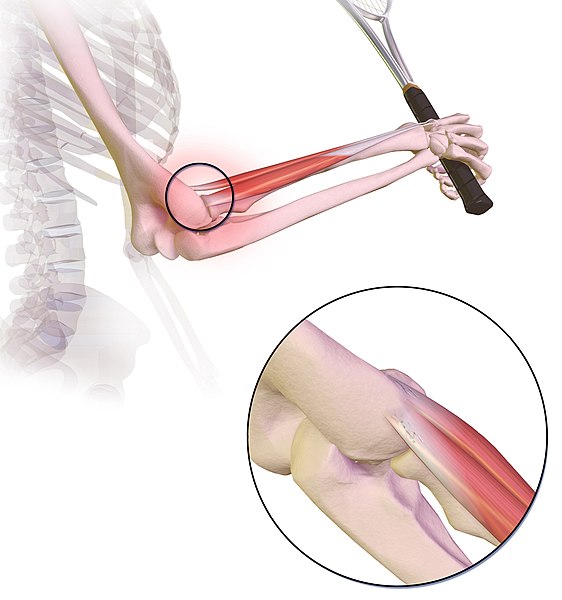


Joseph R. Anticaglia, MD
Medical Advisory Board
With warmer weather, outdoor activities have become more popular. On a summery day, you can see men and women in their tennis whites swinging their racquets and hear the “booms and pops” the tennis balls make. Occasionally a player complains of discomfort and pain in the elbow and wonders, “Might this be the beginning of tennis elbow?”
Tennis elbow, also known as lateral epicondylitis, is a disorder that causes pain and tenderness involving the lateral, outer part of the elbow. It often happens after repeated actions of the muscles of the forearm causing the tendons (tissue that goes from muscles and attaches to bone) to wear and tear. As the name suggests, it’s associated with tennis players who overuse their ‘backhand and wrist extension’ during matches over months or years.
But the above disorder is not limited to tennis players. It can affect anyone who routinely uses their forearm muscles. For example, carpenters, weightlifters, squash and other racquet players, painters, bowlers, or workers whose job is to use heavy, repetitive gripping and lifting tools, such as a jackhammer to do their work are susceptible to tennis elbow.

Tennis elbow symptoms gradually develop and may progress from mild to severe pain. The elbow joint may be swollen and tender to touch. Patients may experience a weak grip as well as stiffness, tenderness, burning, or pain over the bony bump (prominence) on the outer part of the elbow joint and upper forearm. The pain worsens with activities that involve twisting motions (using a screwdriver, turning a doorknob), gripping (shaking hands, gripping a pen), or lifting heavy objects. Symptoms can last between six months and two years, with most people making a full recovery within a year.
Repeated and excessive use of the forearm muscles in the dominant arm can cause microtears in the tendons that attach to upper bone in the elbow joint and cause tennis elbow pain.
Labor that involves repetitive movements of the forearm and wrist (see above) place workers at an increased risk of developing tennis elbow. Tennis players who use poor equipment, poor technique or who are not physically fit are also at a greater risk of developing this condition.
The diagnosis of this disorder is typically made after obtaining the medical history and examining the patient. Image studies such as CT or MRI may be used to evaluate the extent of the injury.
Many treatments have been prescribed for tennis elbow. Some non-surgical treatments for the affected arm include rest, placing ice packs in the area, topical pain creams and gels, acupuncture, pain relief using NSAIDS, physical therapy and steroid injections into the painful area.
Most patients respond to non-surgical management. However, patients with significant pain who do not respond to conservative treatment, consideration is given to surgical intervention. However, surgery is rarely required. Consult your family doctor concerning the options available to you.
Pain and tenderness around the elbow involve both conditions. The main differences between tennis and golf elbows are the location of the affected tendons and the motions that contribute to the pain.
This article is intended solely as a learning experience. Please consult your physician for diagnostic and treatment options.